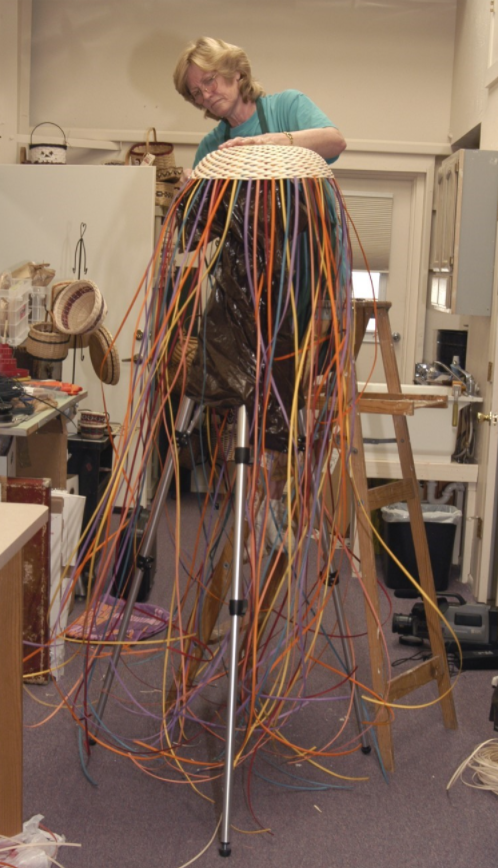Shirley Eichten Albrecht
Shirley Eichten Albrecht, Sculptor/Mixed Media
It’s understandable if the term “basket” doesn’t automatically come to mind when you see one of Shirley Eichten Albrecht’s sculptural works of art. That’s because Shirley has made a name for herself – first in St. Louis, where she became intrigued with basket weaving, and now in Sedona, where she is known as “the basket lady” – reimagining her chosen medium. Her sculptures incorporate gourds, raku pottery she creates herself and antlers, all inextricably intertwined with natural fibers in ways that are new and fresh. Look closely and your mind’s eye might spy a Native American maiden or an artifact from an ancient pueblo. Shirley allows her materials to dictate form, elevating what is often considered craft to fine art.
“When I begin working with a gourd or raku, I take time to explore its shape, examine its colors and the feelings it evokes, and listen to the story it wants to tell,” says Shirley. “Only then do I begin to weave. My raku and my gourds are my canvas, and my weaving is my paint. And each finished piece takes on its own voice.”
Shirley grew up on a farm in Minnesota and graduated from St. Cloud State University with a degree in art and music. She taught in Minnesota and Texas before moving to St. Louis in 1987. Shirley cofounded a basket-weaving guild there and, when she moved to Sedona in 2001, she cofounded one in Red Rock Country. The artist has won numerous local, regional and national awards, and has been juried into prestigious shows in Arizona, Colorado, Ohio and Missouri. Her work has appeared in publications including Phoenix Home & Garden.
Fiesta de Colore - The Making of the Basket
This basket had some very unique challenges. To start with, the spokes (the colored reed) were 7’ long. This necessitated using a ladder to weave the piece. Also, because the spokes were so long it could not be woven in the more traditional way, in an upright position.
I started the basket initially with the base flat on my work counter and I wove a number of rows until I determined that I had the width I wanted. I then used a tripod (the only thing I could find in the studio that would work) to place the basket on upside down. I then stood on a 6’ ladder and began to weave as it was hanging. The basket did not go back into an upright position until I had completed all of the weaving. I then stood it up and brought the spokes together so they could be wrapped.
The final step was attaching the large jingles and trimming the spokes.













